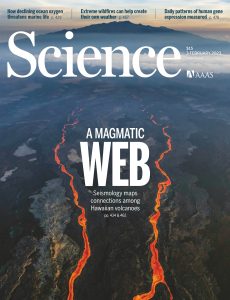
Science – 3 February 2023
English | 116 pages | pdf | 27.85 MB
Welcome at Science Magazine 3 February 2023 Issue
The ranking of universities and colleges at the national and global level is a well-known dubious practice. Flawed methodologies generate distorted and inaccurate profiles of these institutions. Yet, rankings have remained a popular and trusted measure of “the best” by the public. U.S. News & World Report has long had a stranglehold on US higher education. Using algorithms that process various measurements such as standardized test scores, alumni giving, and opinion surveys, it publishes annual ranked lists of undergraduate colleges as
well as graduate, business, law, and medical schools. For too long, parents, politicians, and trustees have treated these lists with more importance than they deserve. That may be ending, as prestigious law and medical schools have started to walk away from this “evaluation.”
I spent 15 years in academic administration working under this tyranny. In a choice I later regretted, I voluntarily filled out meaningless surveys from U.S. News about the “reputation” of other institutions (questions like “Give every university a 1-5 ranking” or “Name the five most innovative universities”). I also endured meeting after meeting of trustees talking about how important it was for our university to “get ahead” of certain other universities (mostly the ones their friendswent to). And I watched as Washington University in St. Louis School of Law sold its soul by trying to attract students with high entrance exam test scores through offers of financial aid, whether they needed it or not.
It was an unsuccessful effort to get into U.S. News’s “T-14”—the top 14 law schools in the nation. There are two obvious methodological problems with all of this. One is that the numerical rankings suffer from false precision. Is there really a difference between #10 and #11 in the undergraduate school rankings? Johns Hopkins University famously had a plan called “10 by 20” with the goal of getting to #10 by 2020. Hopkins is a great undergraduate institution—whether it’s #10 or #11 is meaningless, but it did indeed make it into the top 10 ahead of schedule, which no doubt delighted its trustees and students.
The other methodological problem is that rankings reward those schools that boost measurements by admitting students who have had the advantages of better pre-college education and test preparation coaching, and whose wealth will make them likely future donors. Equally worthy applicants without such resources lose out. Other aspects used in the measurements such as size of individual classes, faculty salaries, faculty-tostudent ratio, and the amount of available financial aid also favor universities with vast financial endowments and income.
The good news is that in recent months, a reckoning has begun. Last September, Columbia University chose not to participate in the undergraduate rankings after
an enterprising professor discovered that the school was fudging its own numbers. When Columbia’s data were corrected, it dropped from #2 to #18, allowing other colleges to inch up the list.
Two months later, law schools began pushing back. Yale and Harvard Law Schools announced that they would refuse to provide data to U.S. News, and several outstanding law schools followed suit. There are some excellent law schools, such as University of Chicago, Vanderbilt, and Washington University in St. Louis, that have stuck to participating in the rankings, no doubt because of pressure from their alumni, students, and trustees. When these schools inevitably move up in rank because higher-ranked schools have dropped out, they will send out gleeful press releases about their new status.
This revolt against rankings has now begun in the world of science as the University of Pennsylvania, Harvard, Stanford, Columbia, and Washington University in St. Louis also recently moved against the medical school rankings. This is a great sign. Faculty at medical schools that haven’t dropped out yet should pressure their deans to follow suit. In announcing its decision, the dean of Washington University’s medical school said, “…it is time to stop participating in a system that does not serve our students or their future patients.”
There are many theories about how higher education in the United States lost its way. A reasonable hypothesis is that it started in 1983 when U.S. News published
its first list. It’s been downhill ever since. Time to turn it around.
Download from: